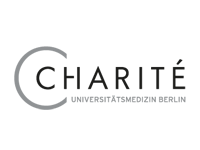Your selection
Research / 25.09.2020
An in-depth atlas of the heart

Researchers from three continents have produced a first extensive draft of a cell atlas of the human heart to understand how this vital organ functions and to shed light on what goes wrong in cardiovascular disease. As the team reports in Nature, it reveals a huge cellular and molecular diversity.
Each day, the human heart beats around 100,000 times. It keeps blood flowing in one direction through the four different chambers, varying speed with rest, exercise or stress. This is extremely complex and needs the cells in each part of the heart to coordinate with each other for every heartbeat. Researchers have, until now, known amazingly little about how the organ manages to pull off this daunting feat, which ensures that the body is supplied with oxygen and nutrients and carbon dioxide and waste products are carried away from other vital organs and tissues.
In order to change this, Professor Norbert Hübner, head of the Genetics and Genomics of Cardiovascular Diseases Lab at the Max Delbrück Center for Molecular Medicine in the Helmholtz Association (MDC), teamed up with Dr Sarah Teichmann from Wellcome Sanger Institute in Cambridge, UK; Professors Jonathan Seidman and Christine Seidman, both from Harvard Medical School in Boston; and Dr Michela Noseda from Imperial College London. Together they launched the Human Heart Cell Atlas, a project dedicated to probing and understanding the human heart, cell by cell. The Human Heart Cell Atlas is part of the international Human Cell Atlas and has received a grant of nearly four million US dollars from the Chan Zuckerberg Initiative as well as 2.5 million euros from the German Center for Cardiovascular Research (DZHK ) and the British Heart Foundation (BHF).
Insights from around half a million cells and cell nuclei
The teams involved in this project, comprised of 33 scientists from 19 institutions in Germany, the United Kingdom, the United States, Canada, China and Japan, analysed around half a million individual cells and cell nuclei of the human heart. Now, they are releasing their first extensive draft of the human heart cell atlas in the journal Nature. It shows the huge diversity of cells and reveals previously unknown subtypes of heart muscle cells and supporting cardiac cells as well as certain types of protective immune cells in the heart and an intricate network of blood vessel cells. It also predicts how the cells communicate to keep the heart working.
“This is the first time anyone has looked at the single cells of the human heart at this scale, which has only become possible with large-scale single cell sequencing,” says Professor Norbert Hübner, senior author from the MDC, Charité – Universitätsmedizin Berlin, the Berlin Institute of Health (BIH ) and the DZHK. “This study shows the power of single cell genomics and international collaboration. Knowledge of the full range of cardiac cells and their gene activity is fundamental to understanding how the heart functions and to unravel how it responds to stress and disease.”
Professor Christine Seidman, a senior author from Brigham and Women’s Hospital, Harvard Medical School and Howard Hughes Medical Institute, says: “Millions of people are undergoing treatments for cardiovascular diseases. Understanding the healthy heart will help us understand interactions between cell types and cell states that can allow lifelong function and how these differ in diseases. Ultimately these fundamental insights may suggest specific targets that can lead to individualized therapies in the future, creating personalized medicines for heart disease and improving the effectiveness of treatments for each patient.” Cardiovascular disease is the leading cause of death worldwide, killing an estimated 17.9 million people each year, with heart attacks and strokes causing the majority of these.
A heterogenous organ
For their work, the researchers used seven female and seven male hearts from brain-dead donors between 40 and 75 years of age from Europe and the United States whose hearts were healthy but not suitable for transplantation for various reasons. In order to characterize the heart cells as precisely as possible, the scientists examined which genes are switched on in the individual cells and cell nuclei from six different regions of the heart. These regions included the left and right atria and ventricles; the lower tip of the heart, called the apex; and the ventricular septum, the partition that separates the two ventricles. After all, the heart is a rather heterogeneous organ. For example, the differences in blood pressure between the left and right ventricles are quite large.
Using single cell sequencing methods, which the scientists adapted beforehand to the particular properties of heart tissue, and with the aid of machine learning and imaging techniques, the team discovered that there were major differences in the cells in these areas of the heart. Each area had specific sets of cells, highlighting different developmental origins and potentially different responses to treatments.
All known cell types in the heart also contain numerous subtypes. There is, for instance, not one heart muscle cell, but many different cardiomyocytes with, in some cases, different functions. The gene expression profiles indicate that of some of them are equipped to handle a much higher metabolic rate than others. The researchers don’t yet know why this is so. They also found very different patterns of gene expression in the fibroblasts that form the heart’s connective tissue.
Too much scaffolding
After a heart attack, or myocardial infarction, the fibroblasts attempt to replace damaged cardiac tissue with new scaffolding to provide support to withstand the forces associated with a normal heartbeat. Sometimes, they overbuild this scaffolding, or extracellular matrix (ECM). This excess scar tissue is often responsible for arrythmias and heart failure.
“We saw various subtypes of fibroblasts. Some produce extracellular matrix via different processes. Some remodel this scaffolding. And some communicate with immune cells that are physically next to them. This could also influence how much scarring occurs,” says MDC researcher Dr Henrike Maatz, a member of Hübner’s lab and one of the four first authors of the paper. “With the Human Heart Cell Atlas, we created a basis to really understand fibrotic processes: Why are they different in the ventricles and atria? How can we control them?”
Another unexpected finding was that the ventricles of the female hearts had higher numbers of muscle cells and fewer connective tissue cells than those of the male hearts – even though they are typically smaller. This finding may be a clue to why women are less vulnerable than men to cardiovascular diseases. “It’s intriguing but it’s based on just seven hearts of each gender. We’ll have to see whether this result holds up to further investigation,” says Maatz.
Zooming in to investigate small areas
As part of this study, the researchers also investigated the blood vessels running through the heart in unprecedented detail. The atlas showed how the cells in these veins and arteries are adapted to the different pressures and locations, and could help understand what goes wrong in the blood vessels during coronary heart disease.
Dr Michela Noseda, a senior author from the National Heart and Lung Institute, Imperial College London, says: “Our international effort provides an invaluable set of information to the scientific community by illuminating the cellular and molecular details of cardiac cells that work together to pump blood around the body. We mapped the cardiac cells that can be potentially infected by SARS-CoV-2 and found that specialized cells of the small blood vessels are also virus targets. Our data sets are a goldmine of information for understanding the subtleties of heart disease.”
For a long time scientists only had a bird’s eye view of the heart, which was like looking at a map from above. With the help of single-cell sequencing technology, researchers can now, for the first time, zoom in to investigate small areas.
Dr Sarah Teichmann, a senior author from the Wellcome Sanger Institute and co-chair of the Human Cell Atlas Organising Committee, says: “This great collaborative effort is part of the global Human Cell Atlas initiative to create a ‘Google map’ of the human body. Openly available to researchers worldwide, the Heart Cell Atlas is a fantastic resource, which will lead to new understanding of heart health and disease, new treatments and potentially even finding ways of regenerating damaged heart tissue.”
Funding
This study was supported by the British Heart Foundation (BHF), European Research Council, the Federal Ministry of Education and Research of Germany, the German Center for Cardiovascular Research (DZHK), the Leducq Fondation, the German Research Foundation (DFG ), the Chinese Scholarship Council (CSC), the Alexander von Humboldt Foundation, the European Molecular Biology Organization (EMBO ), the Canadian Institutes for Health Research (CIHR), the Heart and Stroke Foundation (HSF), Alberta Innovates (AI), the Chan Zuckerberg Initiative (CZI), the Wellcome Sanger Institute, Wellcome, the US National Institutes of Health (NIH) and the Howard Hughes Medical Institute.
Further information
- All data from this study can be explored online.
- WHO statistics on cardiovascular disease
- How the heart works (website of the British Heart Foundation)
- Press release: “Straight to the heart”
- Press release: “Unlocking the secrets of heart cells”
Genetics and Genomics of Cardiovascular Diseases
Literature
Monika Litviňuková, Carlos Talavera-López, Henrike Maatz, Daniel Reichart et al. (2020): “Cells of the adult human heart”. Nature, DOI: 10.1038/s41586-020-2797-4.
Contacts
Professor Norbert Hübner
Head of the Genetics and Genomics of Cardiovascular Diseases Group
Max Delbrück Center for Molecular Medicine in the Helmholtz Association (MDC)
+49-30-9406-3512 (Secretariat)
nhuebner@mdc-berlin.de
Dr Henrike Maatz
Postdoc in the Genetics and Genomics of Cardiovascular Diseases Group
Max Delbrück Center for Molecular Medicine in the Helmholtz Association (MDC)
h.maatz@mdc-berlin.de
Jana Schlütter
Editor, Communications Department
Max Delbrück Center for Molecular Medicine in the Helmholtz Association (MDC)
+49-30-9406-2121
jana.schluetter@mdc-berlin.de or presse@mdc-berlin.de
The Max Delbrück Center for Molecular Medicine
The Max Delbrück Center for Molecular Medicine in the Helmholtz Association (MDC) was founded in Berlin in 1992. It is named for the German-American physicist Max Delbrück, who was awarded the 1969 Nobel Prize in Physiology and Medicine. The MDC’s mission is to study molecular mechanisms in order to understand the origins of disease and thus be able to diagnose, prevent, and fight it better and more effectively. In these efforts the MDC cooperates with Charité – Universitätsmedizin Berlin and the Berlin Institute of Health (BIH) as well as with national partners such as the German Center for Cardiovascular Research (DZHK) and numerous international research institutions. More than 1,600 staff and guests from nearly 60 countries work at the MDC, just under 1,300 of them in scientific research. The MDC is funded by the German Federal Ministry of Education and Research (90 percent) and the State of Berlin (10 percent), and is a member of the Helmholtz Association of German Research Centers. www.mdc-berlin.de
The Wellcome Sanger Institute
The Wellcome Sanger Institute is a world leading genomics research centre. We undertake large-scale research that forms the foundations of knowledge in biology and medicine. We are open and collaborative; our data, results, tools and technologies are shared across the globe to advance science. Our ambition is vast – we take on projects that are not possible anywhere else. We use the power of genome sequencing to understand and harness the information in DNA. Funded by Wellcome, we have the freedom and support to push the boundaries of genomics. Our findings are used to improve health and to understand life on Earth. Find out more at www.sanger.ac.uk
Wellcome
Wellcome exists to improve health by helping great ideas to thrive. We support researchers, we take on big health challenges, we campaign for better science, and we help everyone get involved with science and health research. We are a politically and financially independent foundation. www.wellcome.ac.uk
The Imperial College London
Imperial College London is one of the world's leading universities. The College's 17,000 students and 8,000 staff are expanding the frontiers of knowledge in science, medicine, engineering and business, and translating their discoveries into benefits for our society.
Imperial is the UK’s most international university, according to Times Higher Education, with academic ties to more than 150 countries. Reuters named the College as the UK's most innovative university because of its exceptional entrepreneurial culture and ties to industry. www.imperial.ac.uk
The Harvard Medical School
Harvard Medical School has more than 11,000 faculty working in the 11 basic and social science departments comprising the Blavatnik Institute and at the 15 Harvard-affiliated teaching hospitals and research institutes: Beth Israel Deaconess Medical Center, Boston Children’s Hospital, Brigham and Women’s Hospital, Cambridge Health Alliance, Dana-Farber Cancer Institute, Harvard Pilgrim Health Care Institute, Hebrew SeniorLife, Joslin Diabetes Center, Judge Baker Children’s Center, Massachusetts Eye and Ear/Schepens Eye Research Institute, Massachusetts General Hospital, McLean Hospital, Mount Auburn Hospital, Spaulding Rehabilitation Network and VA Boston Healthcare System. www.hms.harvard.edu
www.mdc-berlin.deOverview News
News Buch Berlin
From cell biology to CRISPR/Cas – new knowledge for schools
The Life Science Learning Lab at the Berlin-Buch research campus offers both school students and teachers the opportunity to immerse themselves in science. This year, the facility celebrates its 25th ...
more ...ERC grants Berlin scientists € 2.5 million each
Neuroscientists Gary Lewin and James Poulet at the Max Delbrück Center for Molecular Medicine have won highly coveted and competitive ERC Advanced Grants to study pain and the neural mechanisms that u...
more ...The Protein Expert
Prof. Dr. Fan Liu from the Leibniz-Forschungsinstitut für Molekulare Pharmakologie (FMP) has recently received several awards for her contributions to the field of cross-linking mass spectrometry.
more ...Events Buch Berlin
19.04.2024, 08:30
Lehrkräftekongress: Gemeinsam Schüler:innen für Naturwissenschaften begeistern - gemeinsam Zukunft gestalten
Der Verband der Chemischen Industrie e.V., Landesverband Nordost, das Max Delbrück Center, das Leibniz-Forschungsinstitut für Molekulare Pharmakologie im Forschungsverbund Berlin e.V., das Gläserne La...
more ...21.04.2024, 16:00
Großes Sinfoniekonzert "Durch die Nacht zum Licht"
Saisonauftakt der Bürgersinfonie mit Werken von Beethoven, Mendelssohn Bartholdy und Berwald
more ...06.05.2024, 09:00
Realtime PCR und digital PCR Kurs
Der RealTime PCR und Digital PCR Kurs richtet sich an erfahrene PCR Anwender*innen und an Einsteiger*innen. Wichtige PCR Grundlagen werden erörtert, bevor die RealTime PCR besprochen und Genexpression...
more ...







